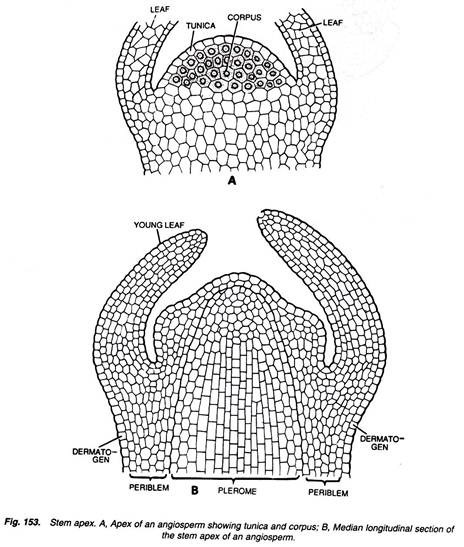The following points highlight the two main exercises to study shoot apex and root apex.
Exercise 1:
To study L.S. shoot tip for studying cytohistological zonation and origin of leaf primordia.
Shoot Apex:
1. Shoot apex is somewhat convex or slightly elongated with abroad base (Figs. 151-153).
2. It can be distinguished into four distinct regions, i.e., tunica, corpus, flank meristem and rib-meristem.
3. Tunica may be one-layered or two-layered.
4. In case of two-layered tunica, the outer tunica cells are generally smaller than that of the cells of inner tunica layer.
5. Corpus is a region of irregularly arranged cells of different shape and size.
6. Cells of the flank meristem are small, narrow and radially elongated.
7. Below the corpus is present the region of rib-meristem.
8. Leaf is generally initiated by periclinal divisions in few cells of inner tunica.
9. Leaf primordia in different stages of development are seen in young stages.
Exercise 2:
To study L.S. root apex.
Root Apex:
1 Three distinct sets of initials are seen in the root apex which are responsible for the formation of root cap, dermatogen, periblem and central cylinder or stele.
2. Root cap is a well developed region and in some species a columella is also present in this region.
3. Dermatogen, which is responsible for the formation of epidermis, is single-layered.
4. Inner to the dermatogen is present many cells thick region of periblem which is responsible for the development of cortex.
5. Sometimes cortex is divisible into outer cortex and inner cortex.
6. In the centre is present the central cylinder or stele.
7. In the roots, an inactive zone is present in the tip called quiescent center (Fig. 154).



